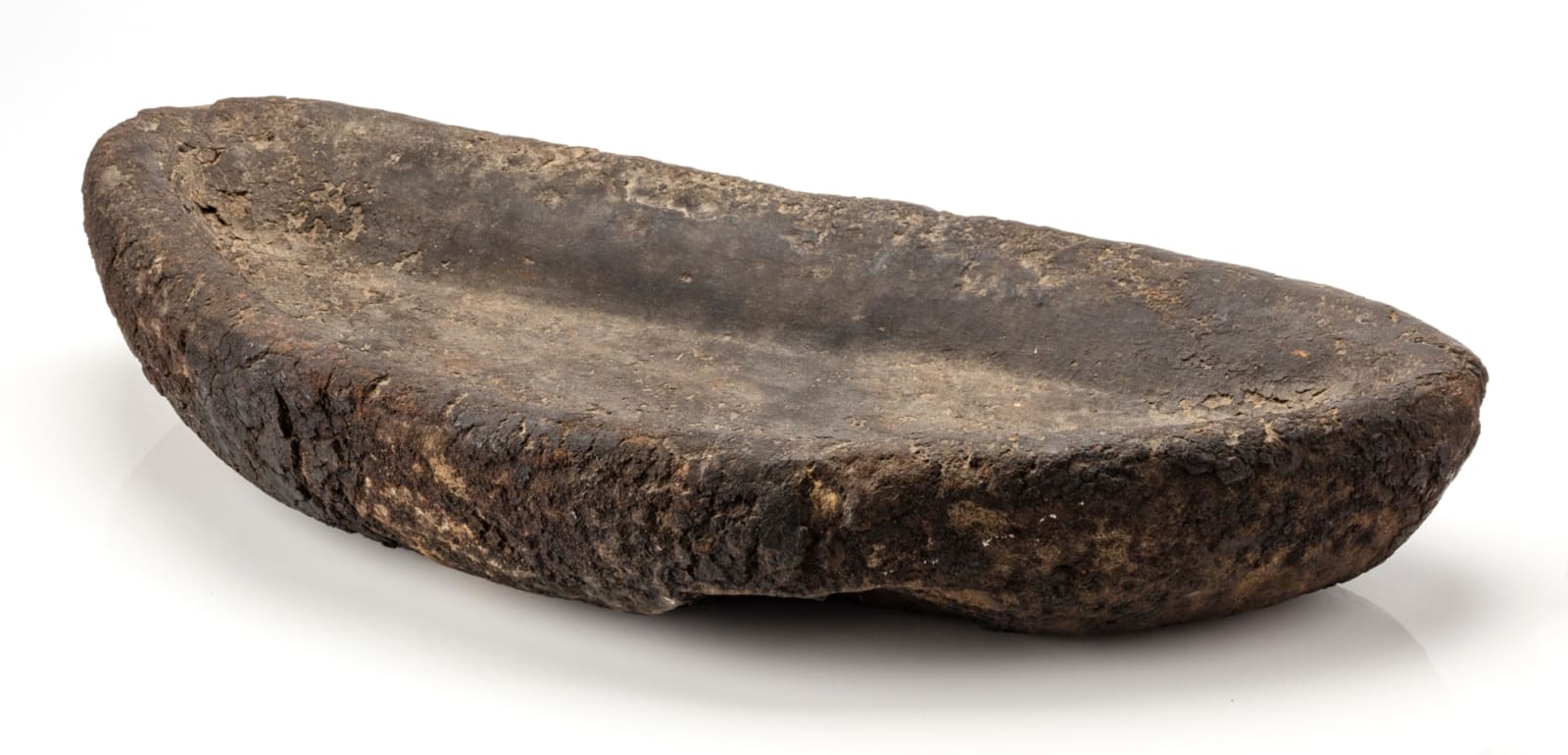-
Artworks
UNIDENTIFIED INUIT MAKER, EASTERN CANADIAN ARCTIC
Qulliq (Kudlik / Oil Lamp), early to mid 1900sstone, 3.25 x 20.5 x 9.25 in (8.3 x 52.1 x 23.5 cm)LOT 33
ESTIMATE: $1,200 — $1,800
PRICE REALIZED: $976.00Further images
The qulliq (or kudlik), a crescent-shaped stone lamp usually fueled by seal blubber oil, was used to heat and light Inuit homes and to cook food. This was especially important...The qulliq (or kudlik), a crescent-shaped stone lamp usually fueled by seal blubber oil, was used to heat and light Inuit homes and to cook food. This was especially important in winter, when survival literally depended on this vital piece of technology. Usually, dried moss or cottongrass was laid along the straight edge as a wick, and the qulliq was carefully tended by the woman of the house using a stick (taqqut). Qulliit (pl.) were precious possessions which, with luck, were passed from one generation to the next. They epitomize the very idea of hearth and home and like the woman’s curved ulu knife, they are often seen as accessories in artworks or depicted as symbolic decorative shapes. A qulliq is frequently lit in Inuit ceremonies, and one is represented on the Nunavut coat of arms. This example, with its marvelous patina of age and use, is particularly impressive and evocative.
References: For fine examples of Inuit art featuring qulliit see Ingo Hessel, Inuit Art: An Introduction, (Vancouver: Douglas & McIntyre / New York: Harry Abrams / London: British Museum Press, 1998), pl. 49, p. 65 (Johnny Inukpuk); and Jean Blodgett, Grasp Tight the Old Ways: Selections from the Klamer Family Collection of Inuit Art, (Toronto: Art Gallery of Ontario, 1983), cat. 116, pp. 28 and 175 (Elijassiapik), and cat. 118, p. 179 (Nayoumealook). See the prints Qullik (Seal Oil Lamp) by Sheojuk Etidlooie (Cape Dorset Special Release, 2000); and Stone Qulliq by Shuvinai Ashoona (Cape Dorset, 2003 #31). See Oviloo Tunnillie’s sculpture, Bannock Cooking on Qulliq from 1999 in Darlene Wight, Oviloo Tunnillie: A Woman’s Story in Stone, (Winnipeg: Winnipeg Art Gallery, 2016), cat. 19, p. 32. For a stone qulliq from c. 1900 see Virginia Watt et al., Canadian Guild of Crafts Quebec: The Permanent Collection: Inuit Arts and Crafts c. 1900-1980, (Montreal: Canadian Guild of Crafts Quebec, 1980), cat. 225, p. 160.
Provenance
Collection of John & Joyce Price, Seattle, WA.
Join our mailing list
* denotes required fields
We will process the personal data you have supplied in accordance with our privacy policy (available on request). You can unsubscribe or change your preferences at any time by clicking the link in our emails.








